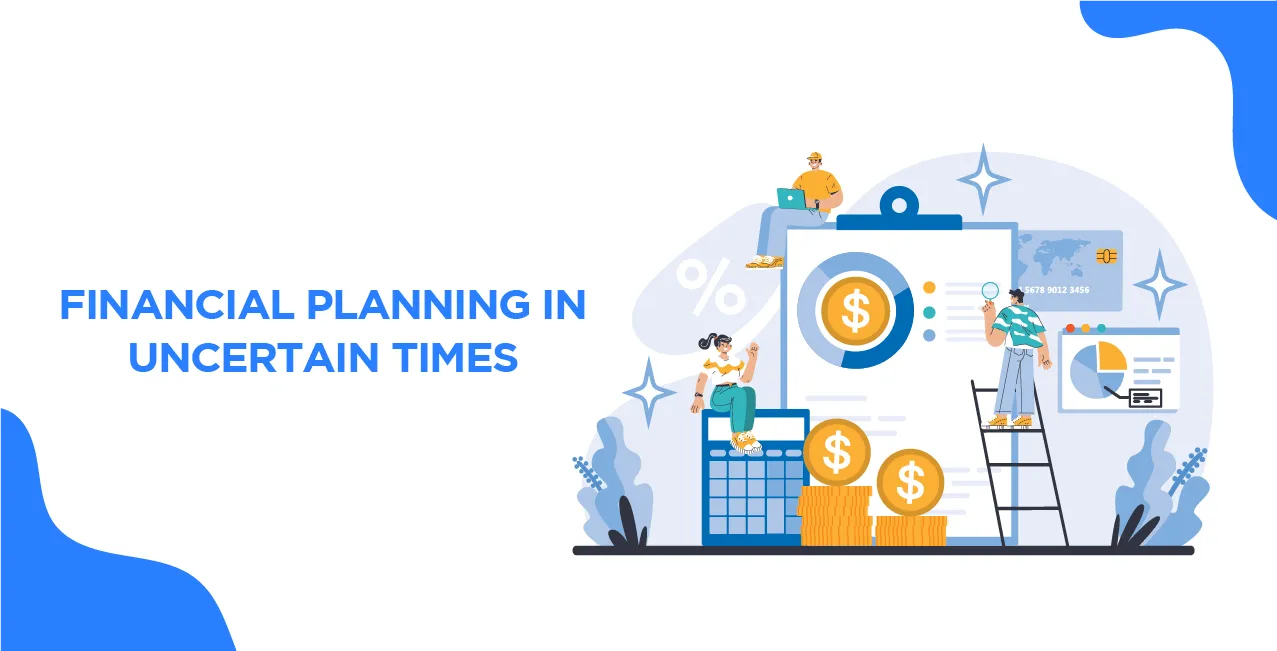
Author
LoansJagat Team
Read Time
4 Min
13 Jun 2025
Financial Planning in Uncertain Times: Strategies for Stability
Everyone wants stability and consistency in life, but are you willing to be consistent with your finances to get there?
Ramesh is a 35-year-old sales manager from Jaipur. He was earning ₹70,000 a month, had a ₹10,000 SIP running, and a ₹1.5 lakh emergency fund. But in just 3 months, his salary was reduced, and a medical emergency arose. His savings dropped to ₹25,000, and his SIPs had to be paused.
Here’s a snapshot of his situation:
Item | Before the Crisis | After the Crisis |
Monthly Income | ₹70,000 | ₹52,000 |
SIP Contribution | ₹10,000 | Paused |
Emergency Fund | ₹1.5 lakh | ₹25,000 |
EMI | ₹18,000 | ₹18,000 |
Unexpected Expenses | ₹0 | ₹1.1 lakh |
Ramesh had good habits, but not enough savings. That’s the point, uncertain times don’t wait. If you're not consistent with your finances today, stability tomorrow stays a dream.
In this blog, let’s talk about practical ways to build financial stability, even when life is anything but predictable.
1. Build a Liquidity Buffer with Emergency Funds
When my cousin lost his job unexpectedly, his savings were depleted in just 45 days. I wish he knew that emergency funds aren’t a luxury. They are survival tools. Ideally, 6–9 months of expenses should be liquid. It can be kept in a fixed deposit, savings account, or a liquid fund.
Read More - Navigating Market Volatility: Lessons From The Recent 8,000-Point Drop
For example, Ramesh is a graphic designer in Delhi. He saved ₹10,000 per month in a liquid fund for 18 months. When he couldn’t find any work for a 3-month, his ₹1.8 lakh fund helped him.
He used it to cover rent, EMIs, and bills without using credit cards or loans. Let’s see how emergency funds help:
Item | Monthly Expense (₹) | 6-Month Buffer (₹) | 9-Month Buffer (₹) |
Rent | 15,000 | 90,000 | 1,35,000 |
Groceries + Utilities | 8,000 | 48,000 | 72,000 |
EMI (Car/Phone) | 7,000 | 42,000 | 63,000 |
Insurance + Health Costs | 3,000 | 18,000 | 27,000 |
Total Emergency Fund | ₹1,98,000 | ₹2,97,000 |
2. Diversify Income Sources
During the pandemic, my full-time job faced pay cuts. If it weren’t for my weekend content gigs, I would've been in a mess. Side hustles aren’t optional anymore, they're your space place in uncertain economies.
For example, Priya is a schoolteacher. She started a home bakery and earned ₹8,000 per month during the 2020 lockdown. When schools shut down again in 2023, her part-time income helped cover household groceries and broadband bills, saving her from having to borrow money. Here’s how her strategy worked:
Source | Avg Monthly Income (₹) | Stability Level | Flexibility | Dependency |
Full-time job | 40,000 | Medium (salary cuts) | Low | High |
Freelance writing | 12,000 | High | High | Medium |
Rent out from spare room | 6,000 | High | Low | Low |
YouTube content | 4,000 | Low | High | Low |
Total Monthly Income | ₹62,000 | - | - | - |
3. Opt for Insurance Protection Before Investing
When my uncle was hospitalised, we realised he had no health insurance and ₹1.2 lakh went from his FD overnight. Before pursuing returns in stocks or gold, ensure you're adequately insured. Medical emergencies can finish years of savings.
For example, Ankur is a startup employee. He bought a ₹5 lakh health policy for ₹9,000 per year. In April, an appendix surgery costing ₹86,000 was fully covered.
His investments in mutual funds remained untouched. Imagine what would have happened if there were no insurance. Let’s take the help of the table given below:
Expense Category | With Insurance (₹) | Without Insurance (₹) |
Hospitalisation Cost | 0 (fully covered) | 86,000 |
Monthly Premium | 750/month | 0 |
Emergency Fund Used | 0 | 50,000 |
Investment Impact | None | SIPs paused for 3 months |
4. Prioritise Low-Risk Investments for Core Wealth
I used to invest everything in equity. But watching my portfolio, which decreased by 18% in one week, changed my mindset. Currently, I maintain at least 50% of my investments in fixed deposits, debt mutual funds, or PPF. Stability over thrill, that’s the mantra.
Also Read - The Safest Investment Options During Economic Uncertainty
For example, Kavya invested ₹5 lakh: ₹3 lakh in debt funds and ₹2 lakh in equity. During a market crash, her equity dropped by ₹30,000, but her debt fund gained ₹4,500. Her portfolio still held value due to its low-risk diversification. Let’s see her finances with the help of the table given below:
Asset Class | Invested (₹) | Gain/Loss (₹) | Risk Level | Liquidity |
Equity Mutual Funds | 2,00,000 | -30,000 | High | High |
Debt Mutual Funds | 2,00,000 | +4,500 | Low | Medium |
Bank FD | 1,00,000 | +3,000 (interest) | Very Low | Medium |
Total Value | ₹5,00,000 | -₹22,500 | - | - |
Conclusion
Uncertain times aren’t rare anymore. They're becoming the new normal. ‘Kabhi bhi. kuch bhi hoye jaa rha hai.’ It can be layoffs, inflation spikes, or family emergencies. So, trust me and build a solid, flexible financial plan that can help you stay stable and optimistic.
About the Author

LoansJagat Team
‘Simplify Finance for Everyone.’ This is the common goal of our team, as we try to explain any topic with relatable examples. From personal to business finance, managing EMIs to becoming debt-free, we do extensive research on each and every parameter, so you don’t have to. Scroll up and have a look at what 15+ years of experience in the BFSI sector looks like.

Quick Apply Loan
Subscribe Now
Related Blog Post


